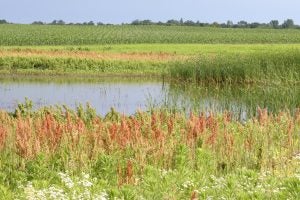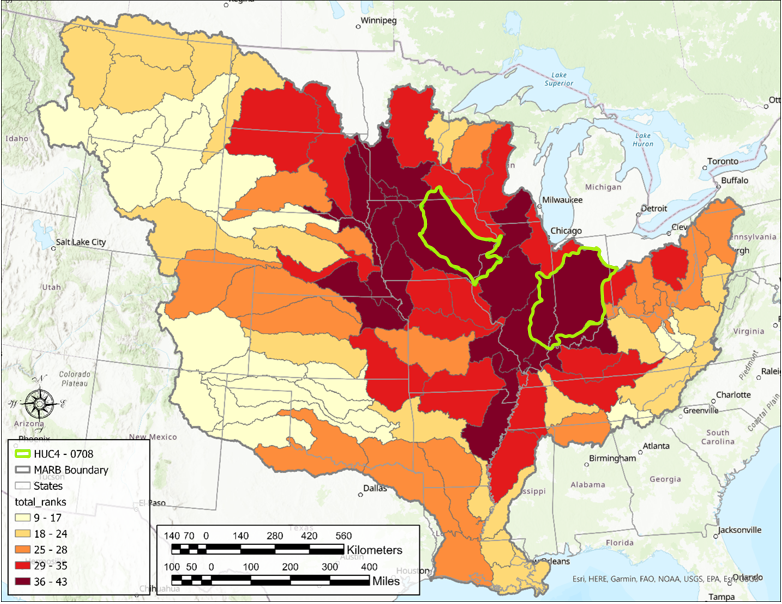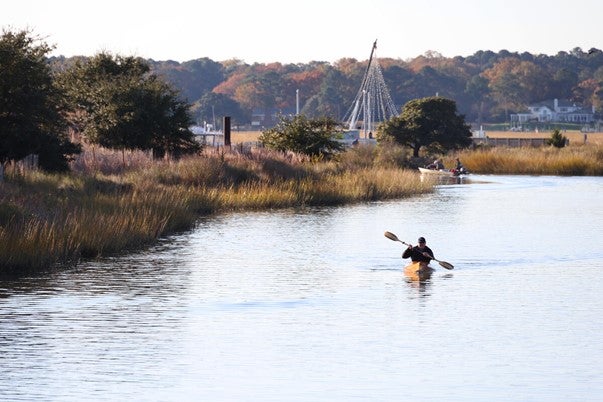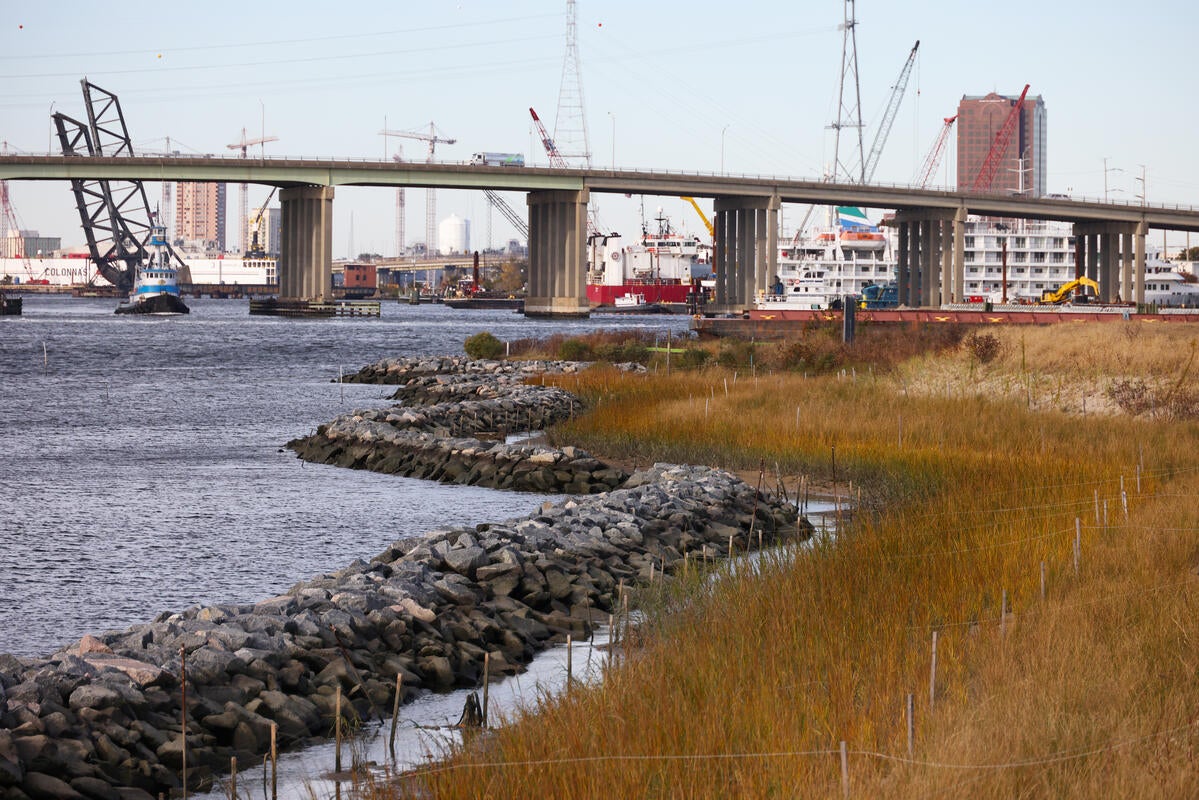
New EDF mapping analysis identifies natural infrastructure use across watersheds
The Mississippi River Basin is sensitive to two major risks – flooding and poor water quality – and future climate change effects will continue to severely increase these risks. However, a natural solution to supporting the Mississippi River Basin (MRB) is natural infrastructure, which consists of structural or perennial vegetation, and provides multiple ecosystem services with the potential to reduce flooding and nitrate loading pollution. Our research shows that wetlands and floodplains are the best natural resources to reduce flood risk and nitrate pollution.
A mapping solution
With limited funding for natural infrastructure, watershed and land managers need to be able to prioritize watersheds throughout the basin for the highest impact potential. Our mapping analysis, recently published in the journal, Land, is one potential solution. It is a roadmap that will help guide decision-makers to prioritize watersheds where natural infrastructure investments would have the greatest potential to mitigate flood and nitrate pollution risks.
We used a geographic information system, commonly known as Arc-GIS, and publicly available spatial data and chose specific criteria for each of seven types of natural infrastructure practices to locate where they could go on the landscape within these priority watersheds. These seven natural infrastructure practices include:
- Depressional wetlands.
- Nitrate-removal wetlands.
- Floodplain levees.
- Floodplain restoration.
- Land use change.
- Water and sediment control basins.
- Riparian buffers.
Similarly, using data from the National Agroecosystem Model, we determined where flood risk would be the highest and where nitrate pollution risk would be the highest. The National Agroecosystem Model is configured for the continental U.S. and is unique in that it can be used in areas as small as a 10-acre field or the entire Mississippi River Basin.
EDFs mapping techniques
We intersected all three spatial datasets (flood risk, pollution risk, and suitable locations for natural infrastructure) to find priority watersheds with the greatest opportunity to use natural infrastructure to reduce these risks. Then we ranked these watersheds according to their numerical scores for each risk and opportunity and added them together for a combined score. Two watersheds in the basin (Wabash and Iowa-Cedar) ranked the highest, indicating widespread opportunities for natural infrastructure implementation in those watersheds.
Our work thus far has moved natural infrastructure research forward in several important ways. First, we assessed a suite of natural infrastructure practices for the MRB, while most previous research has only focused on one or two practices at much smaller scales. Second, we assessed combined risks from flooding and nitrate pollution instead of addressing only one risk. This prioritization scheme we developed is the first of its kind. Finally, we recognize that this is a first step in a much larger process in which we will continue researching. Any federal program set up to manage the water resources of the MRB will need a basin-scale hydrologic model to quantify the benefits of natural infrastructure implemented in high-priority watersheds.
Future models for natural infrastructures
Hydrologic models are a tool used by scientists to study how water moves on the landscape. These models can predict how changes to the landscape, like natural infrastructure, will change downstream water and pollutant flow. Other watersheds, like the Chesapeake Bay, utilize models to predict and measure outcomes from various interventions, helping to guide their programs to success. The data we have compiled and created for this analysis in the Upper Mississippi River Basin will be necessary inputs into a hydrologic model. (Stay tuned for more in the next blog).













